Design thinking is the key to developing innovative, customer-centered solutions. It can also help enhance the actual customer experience.
Home24, a pure-play home and living e-commerce platform, knows that full well since they used this methodology to improve customer experience during returns, refunds, cancellations, complaints, and claims (the so-called reclamation process).
Their goal was to increase customer satisfaction, cut costs, reduce the support department overload, support the company’s “mobile-first” approach, and ultimately boost their NPS score.
Project overview
Home24 opted for the design thinking methodology for two major reasons — it’s a great tool for working together with stakeholders and it helps better explain to stakeholders how user experience works.
They used design thinking during research and ideation phases (which lay at the core of the project) to better understand how to solve CX and UX-related problems at the sensitive reclamation stage of the user journey.
It took Home24 approximately two months to carry out the project, with more than thirty people from different departments involved.
The UX team used the six-stage process to run the project:
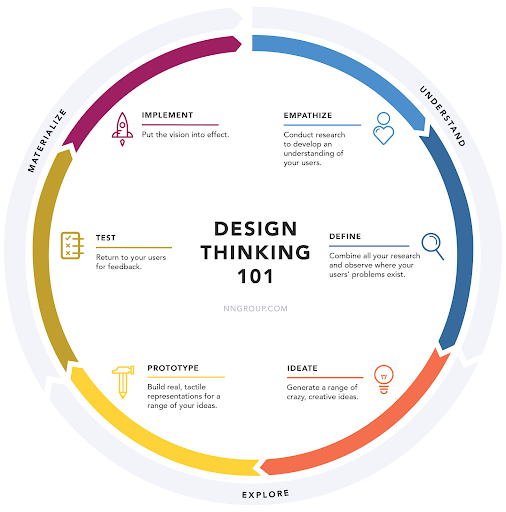
💡 Tip: to address a problem successfully, determine it properly before you start working on the project.
Empathize and Define
Home24 applied three methodologies — benchmarking, user testing, and online survey — to understand how the reclamation process scenario was related to their customers.
“When planning your research, you need to ask the right questions to get the right results. Ask yourself, what do you want to find, what hypotheses you want to validate, and what the resources and deadlines do you have?” says Lariane Rossanese, UX Lead at Home24.
These are the questions that Home24 came up with as a starting point when planning their research:
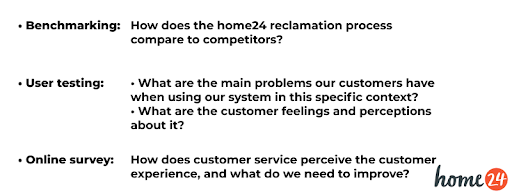
Source: Home24
During this planning phase, it’s also essential to define the metrics to track during UX research and measure project success.
In Home24’s case, a completion rate and user satisfaction were among the metrics that they tracked during UX research. As for measuring project success, they used such metrics as the NPS score, iterations per ticket, and time spent per session.
Ideate
The phase was aimed at generating, absorbing, discussing research findings, and thinking about the possible solutions.
Stakeholder involvement was crucial during ideation, and Home24 took care to invite stakeholders from different departments to join their ideation session. There were people from the technology department, customer service department, supply management department, etc.
Preparing for the session, the UX team turned research data into a digital presentation with the most important findings to show to stakeholders.
💡 Tip: Plan and prepare the tools you will use during the session and decide in advance what you want to get as a deliverable at its end.
Another important thing is to put everyone on the same page regarding the brainstorming session's rules at the very beginning. Home24’s rules were no judgments, everything is possible, and crazy ideas are more than welcome.
Here is what they did at the ideation stage (in brief):
- presentation of the research;
- presented a problem overview;
- generated ideas about the ways to solve the problem;
- created a macro journey map and then a zoom-in journey map that focused on specific stages (use e-commerce journey map templates to speed up this stage);
- voted for the best solutions;
- discussed the selected solutions;
- created a final journey map;
- prioritized solutions;
- carried out a feedback session.
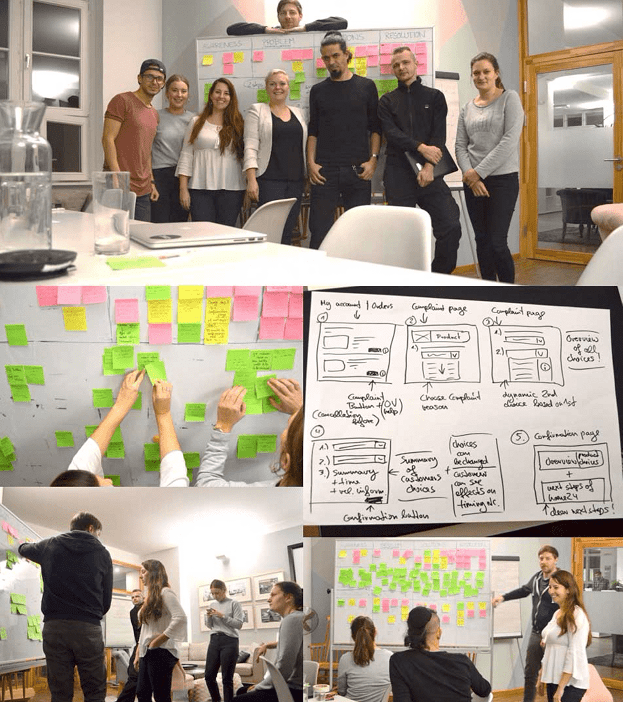
💡Tip: Ideation is the best time to get buy-in from management as everyone is super positive after the session.
Prototype
At this stage, Home24’s goal was to build a real representation of the ideas they generated.
The UX team started with the user flow to understand interactions between phases of the reclamation process. Then they created a low fidelity prototype (wireframe), received feedback on it from stakeholders, and made necessary changes according to the feedback to make sure the process was well aligned with different departments that were involved.
💡Tip: At this stage, building high-fidelity prototypes is a waste of time and effort, as you will almost certainly have to make changes. So limit your product to its simple representation since your goal here is to turn the idea into something tangible, and nothing more.
Test
Home24 conducted user testing in 2 rounds. During the first round that preceded the ideation session, they tested the current system (web version) to understand the existing issues.
The second round tested the mobile version of the wireframe that the UX team had built at the prototype stage, as they were designing for a responsive project, and they were using the mobile-first approach.
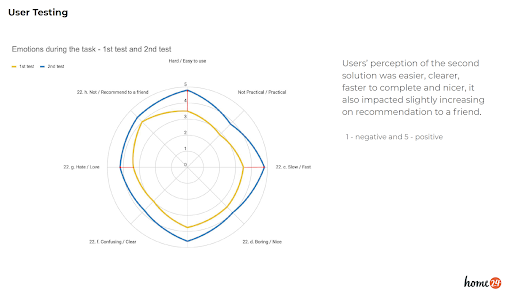
Implement
The focus of this stage was on creating a high fidelity prototype for mobile, tablet, and desktop versions of the Home24 website with all the necessary adjustments based on user testing results.
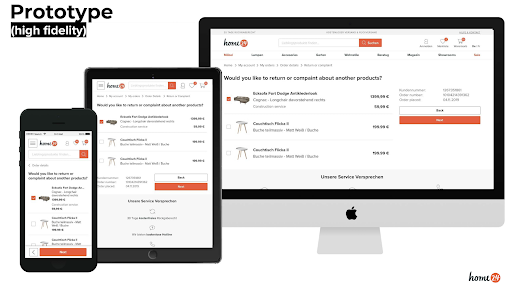
UX outcomes and insights
The process of solving CX and UX problems through design thinking takes time, but the result is worth the effort.
During the project, the UX team obtained a lot of positive outcomes to achieve their goal of improving the customer experience: research report and insights, a backlog of ideas, the user flow, wireframes, high fidelity prototypes, specifications for development, and A/B testing plans for iterations.
Conclusion
Often regarded as a tool of innovation, design thinking is also a perfect tool for resolving CX and UX-related problems in a project before they are ripe. That’s exactly what Home24 did when applying this methodology to enhance customer experience during the reclamation process.





